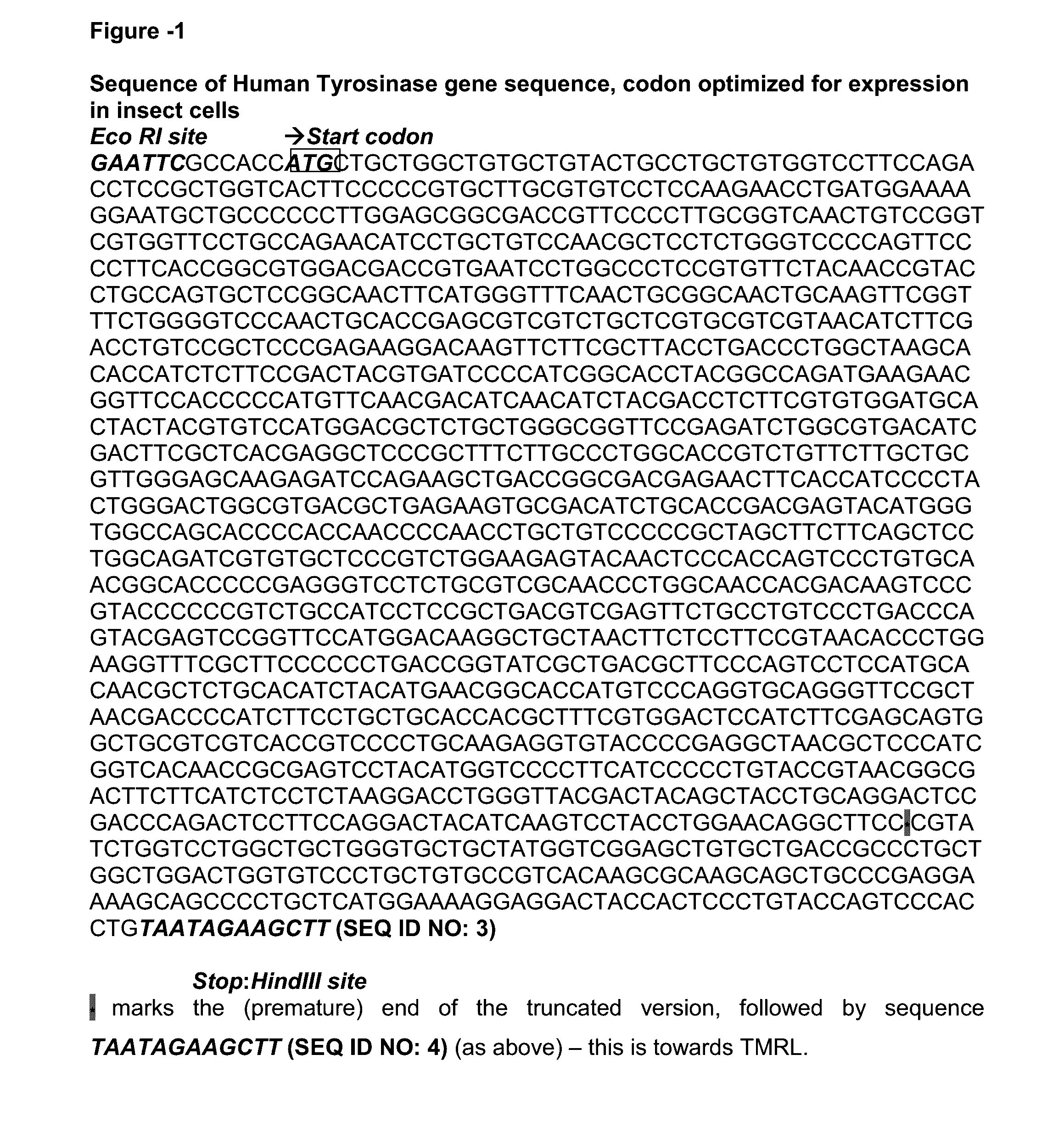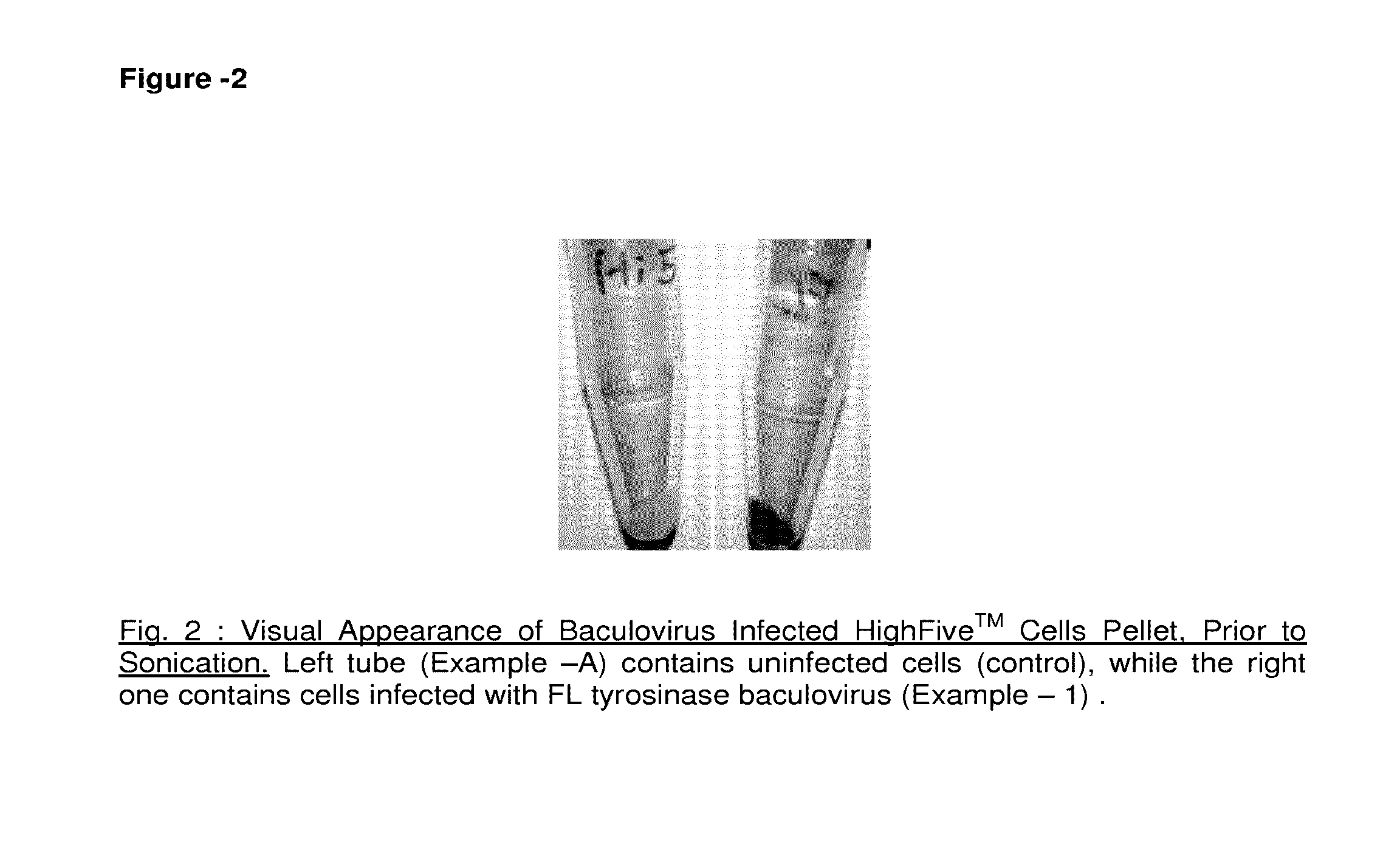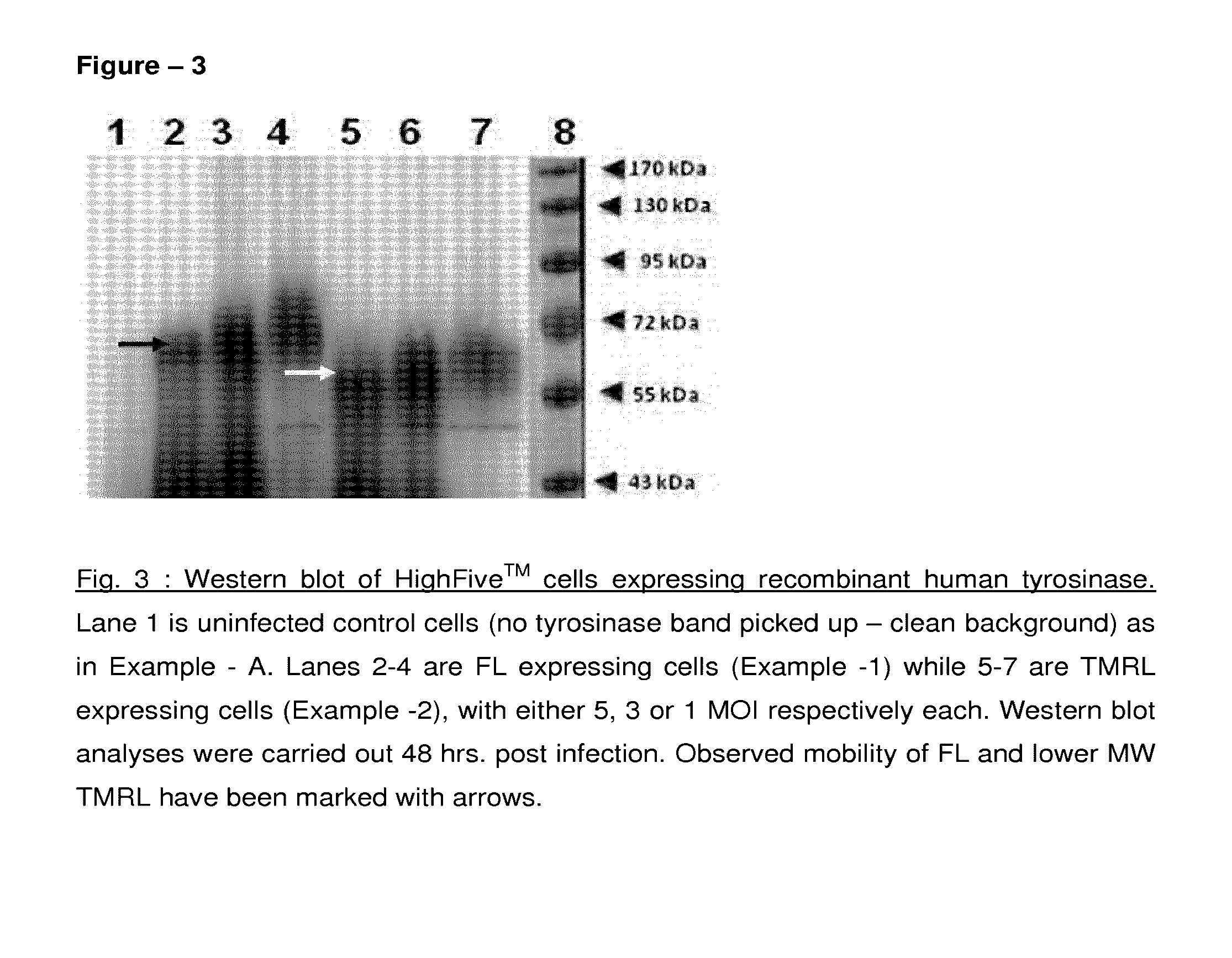Method of preparing recombinant human tyrosinase
a technology of human tyrosinase and enzymatic activity, which is applied in the field of preparing enzymatically active recombinant human tyrosinase, can solve the problems of insufficient human tyrosinase, and inability to detect a single active substan
- Summary
- Abstract
- Description
- Claims
- Application Information
AI Technical Summary
Benefits of technology
Problems solved by technology
Method used
Image
Examples
examples a , 1 and 2
Examples A, 1 and 2
Method of Preparation of Human Tyrosinase as Per the Invention (Example 1 and 2) Compared to Control (Example A)
[0048]The samples of Example 1 and 2 and Example A were prepared as per the following procedure.
[0049]Materials Used
[0050]L-Tyrosine (numbered T3754), L-dihydoxy phyenylalanine (L-DOPA numbered D9628), 4-ethyl resorcinol (4-ER numbered E4820-0) and 3-methyl-2-benzothiazolinone (MBTH numbered 12973-9) were obtained from Sigma / Aldrich. Instruments used to measure optical density (OD) were the Nanodrop 2000c spectrophotometer (Thermo Scientific), TECAN GeniosPro and Infinite M1000 multi-well plate readers. Data was analyzed and presented using SigmaPlot software (ver. 10.0).
[0051]Preparation of Synthetic Human Tyrosinase Gene (Full Length & Truncated), Codon Optimized for Insect Cell Expression
[0052]Full Length (FL) rHuTyrase gene [isoform 1 of P14679 (TYRO_HUMAN) Reviewed, UniProtKB / Swiss-Prot], with Eco RI and Hin dill ends was synthesized (Example 1). Th...
examples 3 to 5
and B to E
(DOPA+MBTH Assay): Solution Phase Tyrosinase Enzymatic Assay
[0136]The samples used were:
[0137]Example B: HML (human melanocytic lysate; prepared by sonicating pigmenting human primary melanocytes in a manner similar to sonication of HIGHFIVE™ insect cells) which is a positive control sample.
[0138]Example C: NEC (No enzyme control) which is a negative control sample.
[0139]Example 3: Sonication lysate supernatant of HIGHFIVE™ cells expressing FL tyrosinase.
[0140]Example 4: Sonication lysate supernatant of HIGHFIVE™ cells expressing TMRL tyrosinase.
[0141]Example 5: Growth media supernatant in which TMRL cells were grown.
[0142]Example D: Sonication lysate supernatant of control uninfected HIGHFIVE™ cells.
[0143]Example E: Growth media supernatant in which above cells were grown Reaction samples were photographed and converted into gray scale intensity (GSI) by computer software digitization. Numerical differences (di) were calculated between GSI of any sample and that of refere...
examples 6 , 7
Examples 6, 7, F and G
[0145]When the activity of 15 μg protein equivalent recombinant human tyrosinase samples were tested in DOPA (2 mM) assay (in absence of MBTH), OD450 nm values reached after 90 min. (indication of extent of oxidation) were converted into a ratio form and are tabulated below:
TABLE 2Extent of DOPA oxidation by Recombinant Human TyrosinaseScale ratioSampledi / dmaxExample F: No Enzyme negative Control0.00Example G: Commercially sourced E. coli0.04(bacteria) expressed recombinant humantyrosinaseExample 6 (FL lysate supernatant)0.90Example 7 (TMRL growth media supernatant)1.00
[0146]While both FL (Example 6) and TMRL (Example 7) are active, the latter is more so at the same protein equivalent. In part, this can be attributed to substantial cellular proteins present along with FL in the lysate, while contaminants in case of TMRL is comparatively less as it has been secreted out into growth medium. Thus, TMRL offers an easier scale up and purification option directly, wi...
PUM
| Property | Measurement | Unit |
|---|---|---|
| temperature | aaaaa | aaaaa |
| total volume | aaaaa | aaaaa |
| pH | aaaaa | aaaaa |
Abstract
Description
Claims
Application Information
 Login to View More
Login to View More - R&D
- Intellectual Property
- Life Sciences
- Materials
- Tech Scout
- Unparalleled Data Quality
- Higher Quality Content
- 60% Fewer Hallucinations
Browse by: Latest US Patents, China's latest patents, Technical Efficacy Thesaurus, Application Domain, Technology Topic, Popular Technical Reports.
© 2025 PatSnap. All rights reserved.Legal|Privacy policy|Modern Slavery Act Transparency Statement|Sitemap|About US| Contact US: help@patsnap.com



